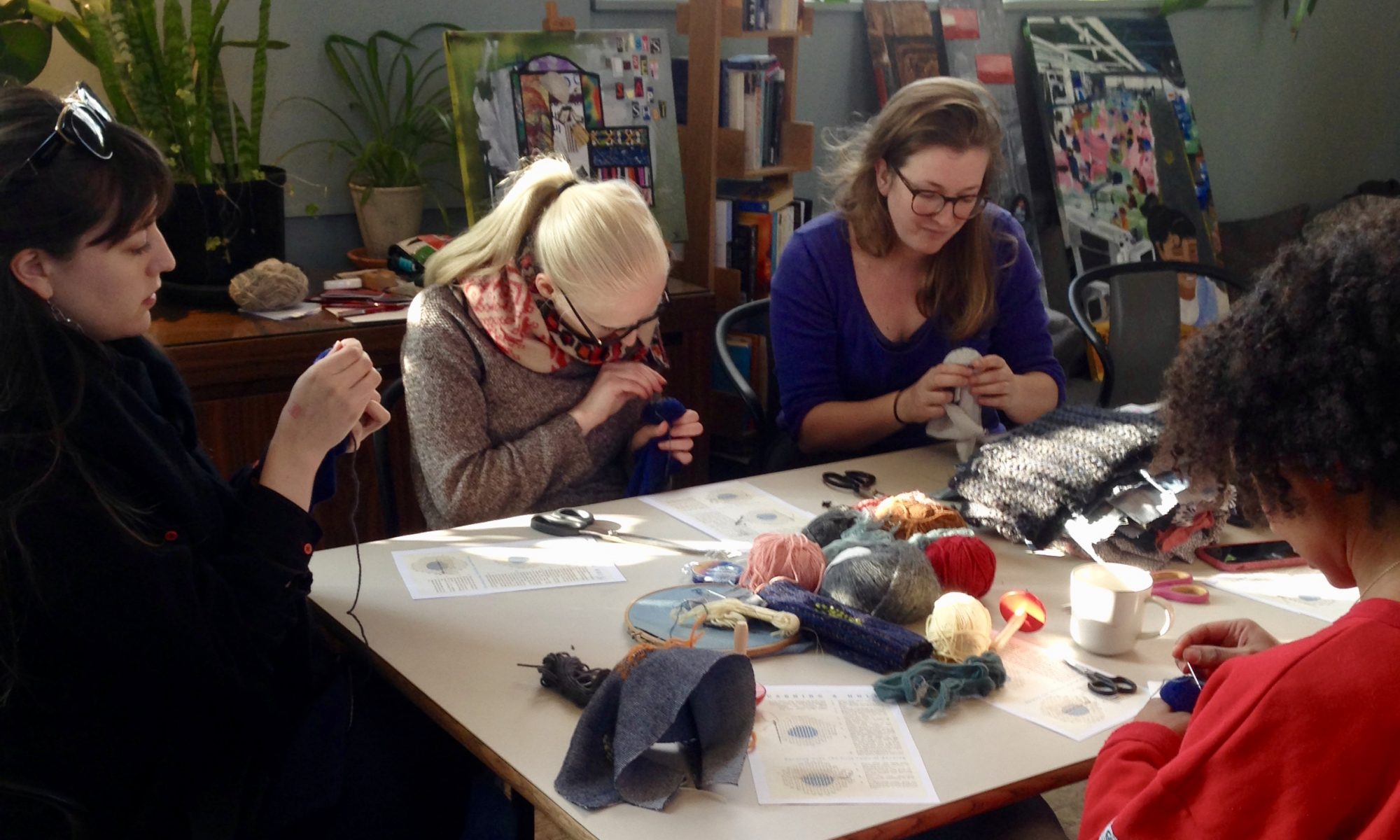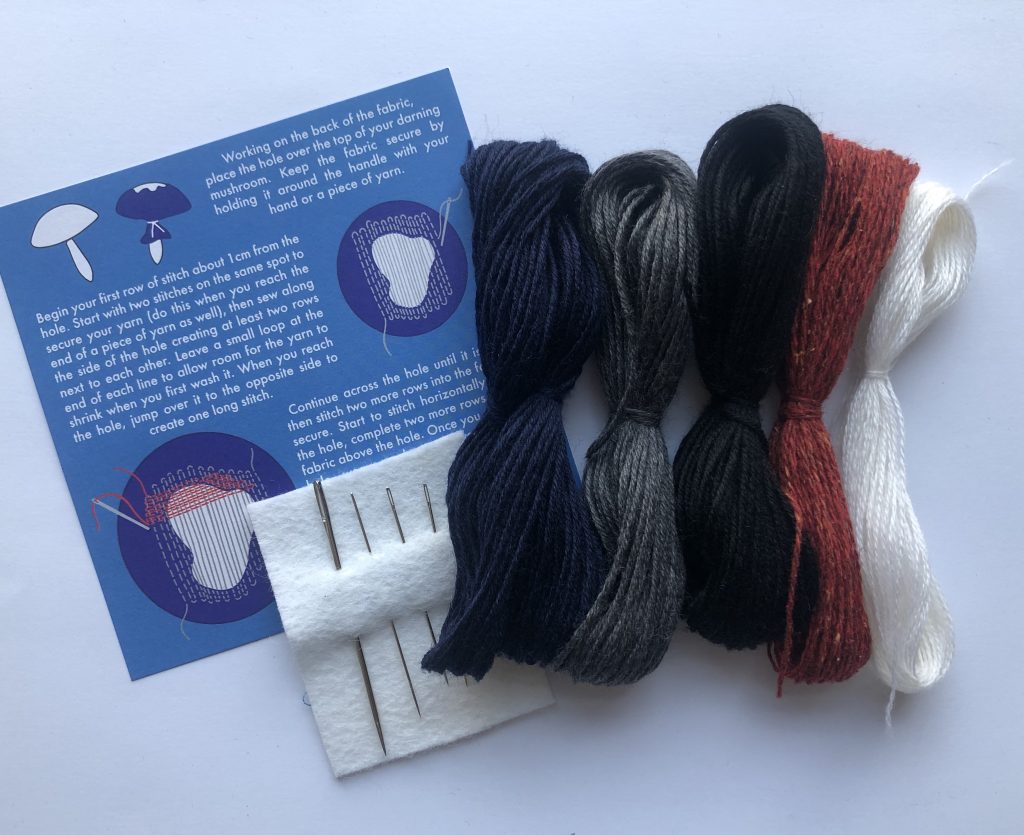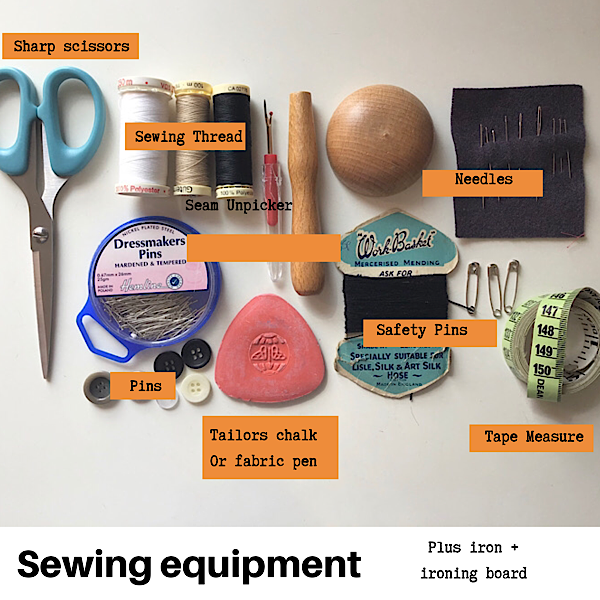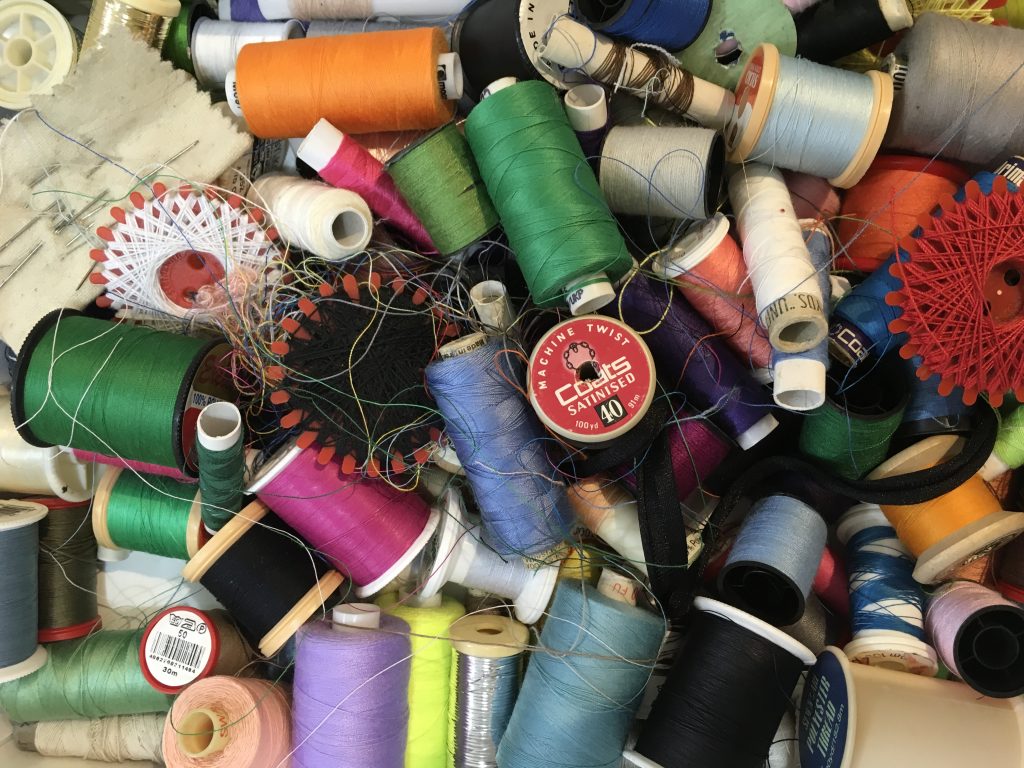
We’ve enjoyed meeting lots of people for our online clothes mending workshops and mend-a-longs. We miss meeting everyone in person but online has the advantage that attendees can join from all over the UK, Ireland and even as far away as Canada. It has been a real positive of being in lockdown helping people mend their clothes. The chats as we mend have been varied and a theme that has come up often is what type of thread to use. We have pulled together a our top tips to help…
Reuse
Our philosophy at Fast Fashion Therapy is to re-use threads and other materials where ever possible. There are millions of supplies out there that someone doesn’t want that is useful for someone else. Why use up the Earth’s resources creating something new when the chances are what you want could be thrown away by someone else? Many of my threads of all colours, substrates and qualities have been donated by family and friends. I inherited my nan’s sewing box when she died and it brings me comfort to know she mended her clothes with these same threads. Including some beautiful wooden reels with the Woolworths price sticker still intact.
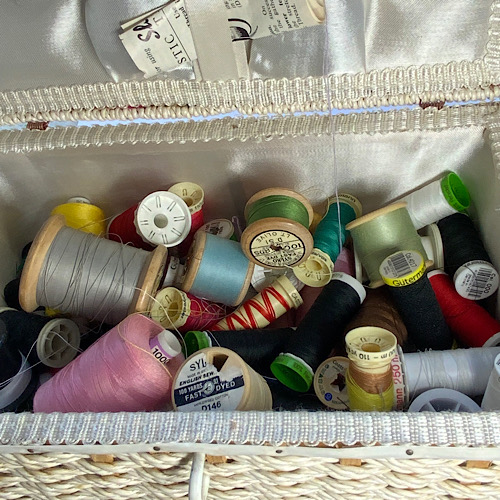
Charity shops are a fantastic source of haberdashery when they are back open. I always head to the back of the shop and hunt around baskets on shelves hidden behind vases and picture frames. Often picking up a bundle for £1.
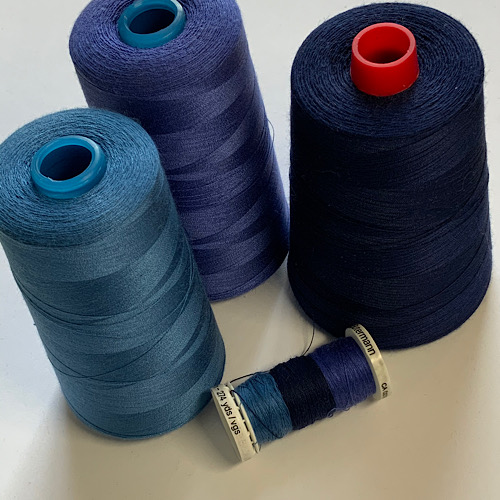
Ebay and Gumtree are great if there is something particular you are after or it isn’t possible to get to a charity shop. I picked up these used industrial reels of thread in various blues for our denim patching kits. I then transfer them onto plastic reels that have also been reused. I put out a request on the Facebook group The Fold Line, used by dressmakers. Many of them had kept the reels but didn’t know what to do with them. They were happy to post them to me knowing that they were going to be reused rather than thrown away.
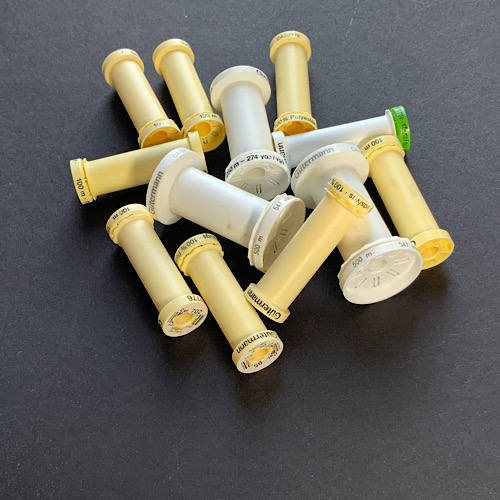
It is important to note if your thread is particularly vintage and has been stored in sunlight or heat it could become brittle and break easily. Try the thread before you use it. It should be difficult to break between your fingers. If it snaps easily it is best not to use it for clothes mending otherwise the stitches will not hold.
What thread should I use to mend my clothes?
The rule of thumb is to match the composition of the thread to the composition of the garment. For example use 100% cotton thread for cotton jeans. However, with so much stretch being included in our modern day garments, this rule doesn’t always follow. You can find technical tables online that tell you which threads to use for which fabrics. We like to keep things simple at FFT so have summarised the threads below
100% Polyester Thread
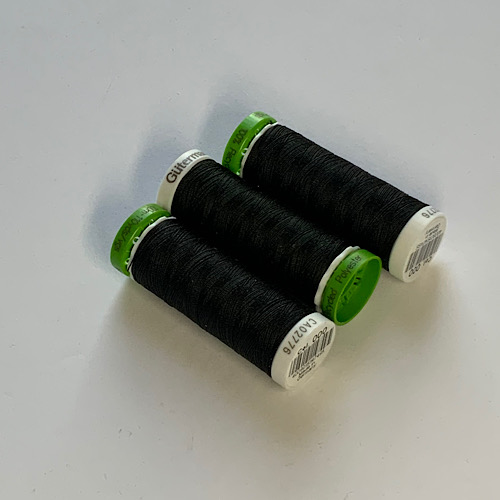
This is an all purpose thread and will work for pretty much all fabrics. It can be used on the sewing machine and for hand sewing. Polyester thread is particularly good for fabrics that have some stretch in them and will stretch with the fabric rather than fighting against it. A downside of Polyester thread is it will not absorb domestic and natural fabric dyes. So if you want to dye a piece of clothing the stitching will stay the same colour. I have done this and it can look quite effective. If you are looking to buy new Polyester thread rather than a reused thread then we recommend sourcing one that has been made from recycled materials. Such as the Gutterman thread in the photo.
100% Cotton Thread
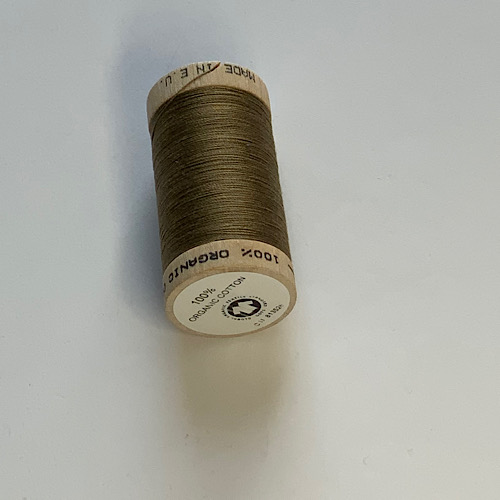
This thread is great for topstitching jeans and other cotton and linen garments. It tends to be slightly thicker than regular Polyester thread. It doesn’t have any stretch and isn’t recommended for stretch fabrics. If you can’t find what you are looking for pre-loved then we like these organic cotton threads from Scanfil. Boro stitching is a decorative method of clothes mending that derives from Japan. Traditionally thicker cotton thread is used in white. We found these cones of 4-ply (4 strands twisted together) on Gumtree to include in our jeans mending kits. We use other colours too but white against dark denim is traditional.
Nylon Thread
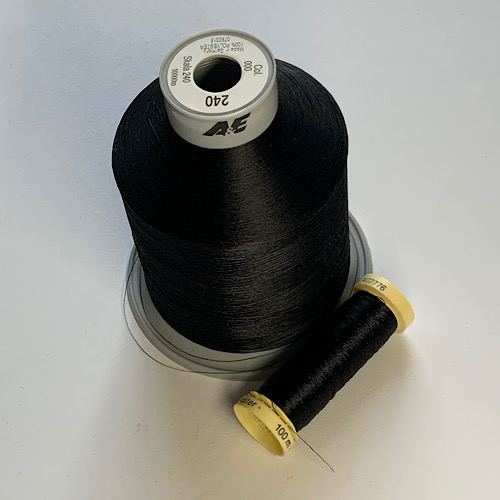
A bit more unusual, this thread is useful for sewing highly stretched fabrics such as swimming costumes, leggings and other sportswear. It is also waterproof so works well for mending showerproof jackets. It is widely available in black and white, other colours might be more difficult to come by in small reels. We bought a large reel from eBay to re-wind onto re-used reels for our sportswear mending kits.
Silk Thread
The only time I’ve use this is to mend silk garments but it is also useful for wool garments. It has a slight stretch to it so could be useful for jersey fabrics if you wanted a natural alternative to Polyester.
Darning Yarns
The sewing threads listed above can be used to darn T-shirts and thinner jersey fabrics such as leggings but we recommend thicker yarns for darning knitwear. The same rule applies that it is best to match the fibre content of the mending yarn as much as you can with the fibre content of the knitwear. Mending yarn is usually sold in a variety of colours but is nearly always a blend of wool and nylon. This is a good all purpose yarn, great for socks, jersey stretch fabric and most jumpers. However there are some special items that we recommend using specific yarn. Maybe a merino wool fine gauge jumper. Or a thick, cosy cashmere cardigan. We have sourced a variety of yarns for our darning mending kits from eBay and Gumtree that we have repurposed into smaller bundles for mending.
It is also important to mend the width of the yarn with that of the jumper. For example, I would use a 2-ply (two threads twisted together) yarn on a fine gauge knit jumper. I would use a thicker 4 or 6-ply yarn on a chunky knitted jumper.
An old tin, plastic box with a lid or a shoe box is useful to store threads in. I have heard of people wrapping the reels with elastic bands to stop the threads coming lose and matting together. Maybe I’ll save that job for another time…
